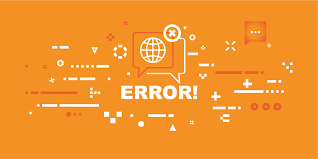Introduction
Are you planning to study abroad? Do you need to validate your studies in another country? Then, academic certificate translation becomes essential. This process might seem simple, but it needs attention and expertise. That’s why this article explains everything you need to know.
We’ll also show you how to avoid common mistakes. And you’ll learn the steps to ensure your translation is legally valid.

What is an academic certificate?
Let’s start with a definition. An academic certificate is a document that confirms your education. It includes grades, subjects, dates, and earned degrees. So, it contains key information about your educational background.
However, translating it word by word is not enough. There’s much more to consider.
Why is accurate translation important?
Accurate translation avoids misunderstandings. It ensures the recipient fully understands your qualifications. In fact, it can make the difference between being accepted or rejected. Besides, translation mistakes can delay your application. So, it’s better to take this seriously from the start.
What type of translation do you need?
In most cases, you’ll need a sworn translation. This kind of translation is legally valid. A state-authorized translator must complete it. Therefore, not just any translator can do it. You must check if the receiving institution requires a sworn translation.
Some universities accept simple translations. However, that’s not common. So, it’s safer to choose the official path.
Who should translate it?
As mentioned, a sworn translator is the right choice. They know the correct terms and formats. Plus, they can sign and stamp the document, which gives it legal validity.
Avoid machine translations or improvised work. Don’t assign the task to someone inexperienced. Even if it seems costly, professional translation is always worth it.
What should a valid translation include?
A valid translation must respect the original format. It should include:
- Student’s full name.
- Name of the educational institution.
- Dates of study.
- Subjects taken.
- Grades earned.
- Awarded degree, if any.
Also, the translator must sign and stamp every page. Some countries require additional apostilles or legalizations. That’s why you should research the specific requirements first.
Steps to translate an academic certificate
Here’s a step-by-step guide to help you:
- Check the destination country or institution’s requirements.
- Find an authorized sworn translator.
- Send a clear copy of the original certificate.
- Confirm the deadline and the price.
- Receive the signed and stamped translation.
- Check that all the information is correct.
- Request an apology if necessary.
- Submit the document to the institution.
These steps ensure everything is properly done from the beginning.
Common mistakes to avoid
Many people make avoidable mistakes. Let’s look at the most common ones:
- Using machine translation.
- Hiring unaccredited translators.
- Sending unclear copies of the document.
- Ignoring destination country requirements.
- Leaving everything for the last minute.
Avoiding these mistakes saves time, money, and stress.
Finally, if you need more information visit 10 common translation errors and how to avoid them.
Additional tips
Besides the main steps, consider these tips:
- Ask if you need to translate other documents, like degrees or letters.
- Make sure the translation includes all required stamps.
- Keep digital and physical copies of everything.
- If unsure, consult the embassy or consulate.
These extra steps will help you stay prepared and calm.
How much does it cost?
Costs vary by country and translator. However, you can expect to pay between 30 and 70 euros per document. Urgency and complexity also affect the price. Always request a detailed quote in advance.
Conclusion
Academic certificate translation is not a simple task. Instead, it’s a key step in your academic or professional path. That’s why it’s worth doing carefully and professionally. This avoids problems and gives you peace of mind.
Don’t wait. Start as soon as possible. Choose a certified professional and follow all the steps. You’ll be closer to reaching your academic goals.
Finally, if you need more information visit Real Estate Translation: Reach Global Clients With Confidence.



